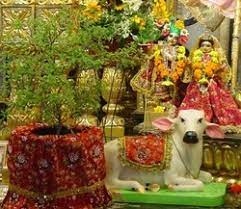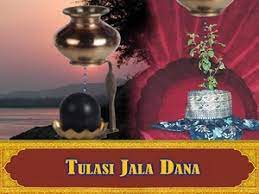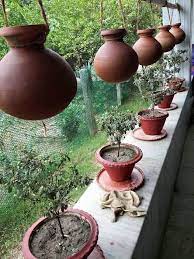From: akash
vedas say that if you worship this god you will get rain, that god you will get this etc. and if you don’t if will be bereft of those benefits, rains will be less etc. Now if we look at almost whole of western world, they have almost everything they need, even without any sacrifices, or worship etc. How is that to be understood.
To hear the answer, please click here
To hear the Hindi answer, please click here
ANSWER: It is a misperception, that the west has almost all that it needs. All of us have probably heard about devastating hurricane and storms. We have heard of hurricane Katrina, few years ago, and also there was a big storm right in the New York City, which is the economic and social capital of America, the pride of America. When the storm came up, the whole American government was helpless . To some extent people were told, flee from here. If we look at the overall situation of nature in America, it is at times quite furious, and there are times when throughout the year, for many months, one is just not able to go out of the house because of heavy snowfall. This may not happen in all parts of America and it certainly does not happen in those parts of America which we see in television or movies. But it does happen in real America. So, first of all the idea that the America is getting everything that it needs, is not true. Similarly, in Europe there have been farce heat waves. Also, in India we had tsunamis , earthquakes, famines etc., but the frequency and the ferocity of the regular hurricanes in America are much more severe. The heat wave that hit Europe few years back was much fiercer than the occasional heat waves, or cold waves or excessive rains that come in India. So rather than going into the intricacies of comparison of natural calamities and l problems that we face in India and America, the underlining principle is that, things are not as rosy in the west as are portrayed in our media and TV. They are quite grave in many ways. Yes, if people do not worship and perform yajgya then the result is, not just that they don’t get rains; rather they don’t get rains in proper way. We should not be naive and simple in understanding that if someone is performing yajgya or is following dharma then suddenly the rains start coming. No that is not completely correct. That is just a causal connection between the two. But this causal connection is much more broader and deeper. You can read the article “artificial rains, imaginary gains, real pains” to get the broader understanding of this.
The general principle is that, the yajgya, the sacrifice, that are performed and dharmic activities that are done are like the taxes that are paid to the government. If the taxes are not paid, the governmental facilities will not come. If we do not pay the water tax then the water may be cut off. But with respect to the nature if the taxes are not paid, things happen in a more subtle and complex way. Sometimes when people do not pay any tax in terms of not doing any yajgya then the result may be less rain or sometimes the result may be heavy rains. Devotees sometimes have a very simplistic understanding that, ‘ Becausewe are doing kirtan, that’s why the rain came’. This is a very superficial understanding because the skeptic may argue, when too much rains come, “Oh, you have done too much kirtan, stop the kirtan now, and the rains will stop”, No. We should not encourage such simplistic and naive misunderstandings and caricatures of the Vedic philosophy. Yajgya in one form, in one way is like paying of taxes, but along with that there is consideration whether all the citizens are following the rules of the state or not. Hence, the citizens have to live according to the rules of the state and they have to pay the taxes, then they will get the facilities from the state. Similarly there are basic principles of morality and spirituality which all human beings are expected to follow. When human beings don’t follow that then they get the reactions and those reactions come in various forms. One of the forms is disruption in natural conditions and natural supplies. This disruption may be in terms of shortage of rains, or it may be excess rains. It may be excess cold or it may be excess heat. If you look at the world today , it’s not just the matter of India or the west, everywhere we are seeing, because people are not living according to the principles of morality and spirituality. Because people are not performing sacrifices, that’s why the natural supplies are increasingly being destructed.
At the time tsunami came I wrote an article called “nature boomerangs”. In that article I had given statistics, how, if we compare 1950s with 2000, the frequency and the ferocity of the natural calamities that have hit the world have increased manifold . Because over the last fifty or sixty years, the world has given up religious morality and spirituality in a major way and we have embraced the course of materialism in an entirely unrestrained manner. Therefore, it is producing its reactions. That’s why all over the world, in the west and in India, because of non performance of yajgya and because of non adherence to morality and spirituality, there is disruption of natural supplies and there are disturbances in nature, which are, in the form of karmic reactions is coming to all of us.
Thank you
Transcriber: Amit Agrawal and Nidhi Agrawal (Noida)
प्रश्न – कोई भी यज्ञ पूजा किये बिना पश्चिमी दुनिया अपनी आवश्यकताओं की पूर्ति सरलता से कैसे कर पा रही है?
उत्तर – हमें ऐसा लगता हैं कि पाश्चात्य देशों के पास सभी भौतिक सुविधाएं सरलता से उपलब्ध हैं। जबकि पाश्चात्य देशों के लोग कोई भी यज्ञ पूजा आदि नहीं करते हैं।
पर हमारी यह धारणा गलत है।
हमने पाश्चात्य देशों में आने वाले प्रचंड आंधी तूफानों के बारे में तो सुना ही है। कभी-कभी वहां पर प्रकृति बेहद उग्र और भीषण रूप ले लेती है। न्यूयॉर्क अमेरिका की आर्थिक और सामाजिक राजधानी है। एक बार न्यूयॉर्क में भयंकर आंधी आई थी जिसमें बहुत अधिक क्षति हुई थी और सरकार एकदम असहाय हो गई थी। अमेरिका के कुछ स्थानों पर इतनी अधिक बर्फबारी होती है कि लोग महीनों तक घर से बाहर तक नहीं निकल पाते हैं।
हम फिल्मों और टेलीविजन में जिस अमेरिका को देखते हैं वहां पर कोई भी प्राकृतिक आपदा नहीं दिखाई जाती। इसलिए हमारे मन में यह छवि बन गई है कि अमेरिका को बिना कुछ किए सब कुछ मिल रहा है परंतु यह सत्य नहीं है।
इसी प्रकार, यूरोपीय देशों मे आने वाली भीषण गर्म हवाऐं (heat waves) भारत में पड़ने वाली ठंड या अत्यधिक वर्षा की तुलना में कहीं अधिक भयंकर होती हैं।
पूजा यज्ञ आदि नहीं करने का अर्थ यह नहीं कि वर्षा नहीं होगी। इसका परिणाम यह भी हो सकता है उचित मात्रा में वर्षा न हो। कहीं वर्षा बहुत कम हो सकती है तो कहीं बहुत अधिक। इसके विपरीत यह सोचना कि यदि कोई पूजा-पाठ करता है तो तुरन्त वर्षा होने लगेगी। ऐसा भी नहीं है। यह इतना सरल नहीं। यज्ञ और वर्षा में सम्बंध अवश्य है किन्तु यह कहीं अधिक गहरा है।
सिद्धांत यह है कि हम जो धार्मिक गतिविधियां करते हैं वह हम ईश्वर रूपी शासक को कर के रूप में देते हैं। राज्य के सभी नागरिक नियमों का पालन करते हुए जब कर भरते हैं तभी राज्य नागरिकों को सुविधायें उपलब्ध कराता है। जैसे बिजली या पानी का बिल नहीं भरने पर शासक आपूर्ति रोक देता है, उसी प्रकार धार्मिक गतिविधियां न करने पर प्रकृति व्यवस्था में विघ्न उत्पन्न करती है।
यह केवल भारत या पश्चिमी देशों की बात नहीं है। विश्व में सभी जगह लोग नैतिकता और आध्यात्मिकता के सिद्धांतों के अनुसार जीवन यापन नहीं कर रहे हैं। लोग यज्ञ नहीं कर रहे हैं। जब नियमों का पालन नहीं किया जाता तो प्रतिक्रिया होती है जो कर्म फल के रूप में हम सब पर आ रही है और हम सब उसे भोग रहे हैं।
इसलिए यह आवश्यक है कि विश्व के सभी व्यक्ति अपने अपने नैतिक और आध्यात्मिक धर्म का पालन करें।
End of transcription.
 Today is the appearance anniversary of Sripada Ramanujacharya, the principal acharya in the Sri, or Lakshmi, sampradaya. Srila Prabhupada wrote, “We find great shelter at the lotus feet of Sri Ramanujacharya because his lotus feet are the strongest fort to combat the Mayavadi philosophy.” (letter 22.11.1974) And in the early days of ISKCON in India, before we had Srila Prabhupada’s Bhagavad-gita As It Is in Hindi, Prabhupada would refer people to read the Hindi edition of the Gita with Sri Ramanujacharya’s commentary.
Today is the appearance anniversary of Sripada Ramanujacharya, the principal acharya in the Sri, or Lakshmi, sampradaya. Srila Prabhupada wrote, “We find great shelter at the lotus feet of Sri Ramanujacharya because his lotus feet are the strongest fort to combat the Mayavadi philosophy.” (letter 22.11.1974) And in the early days of ISKCON in India, before we had Srila Prabhupada’s Bhagavad-gita As It Is in Hindi, Prabhupada would refer people to read the Hindi edition of the Gita with Sri Ramanujacharya’s commentary.



 By Gopal Bhatta das
By Gopal Bhatta das










 By Kamalini Devi Dasi
By Kamalini Devi Dasi

